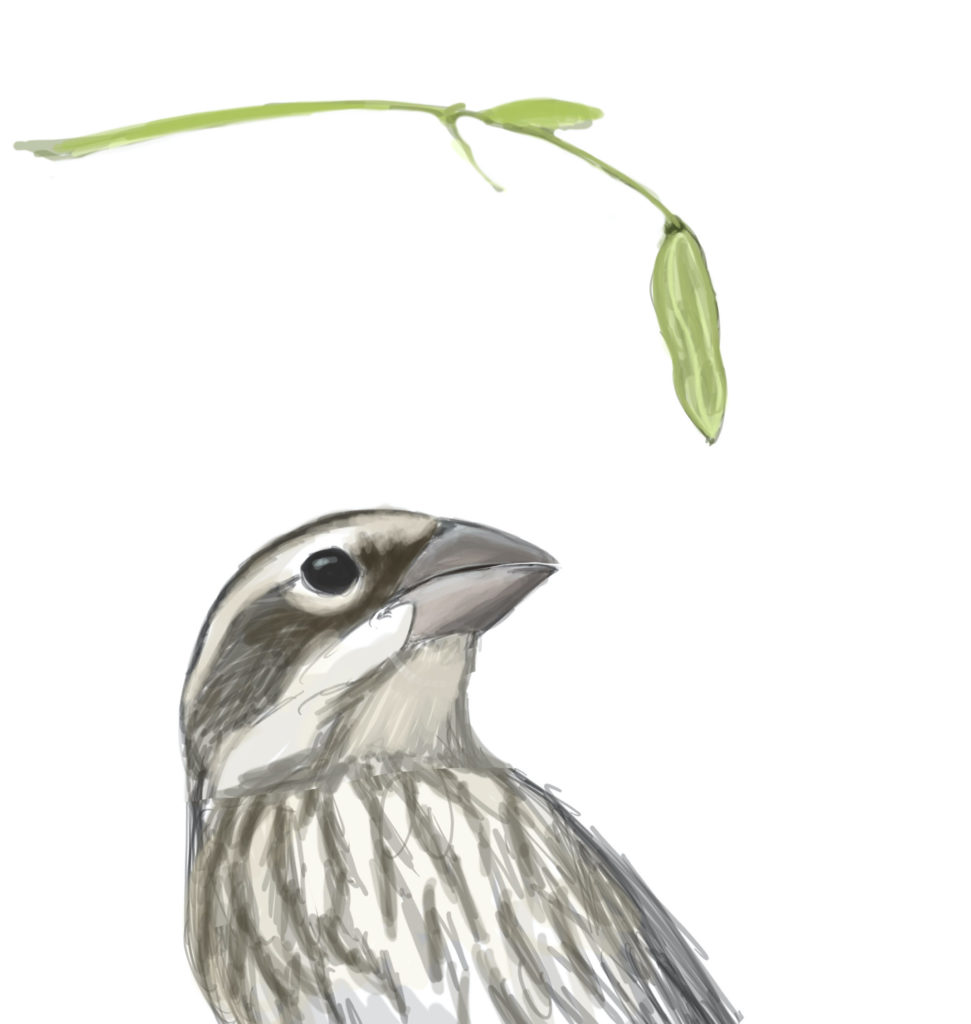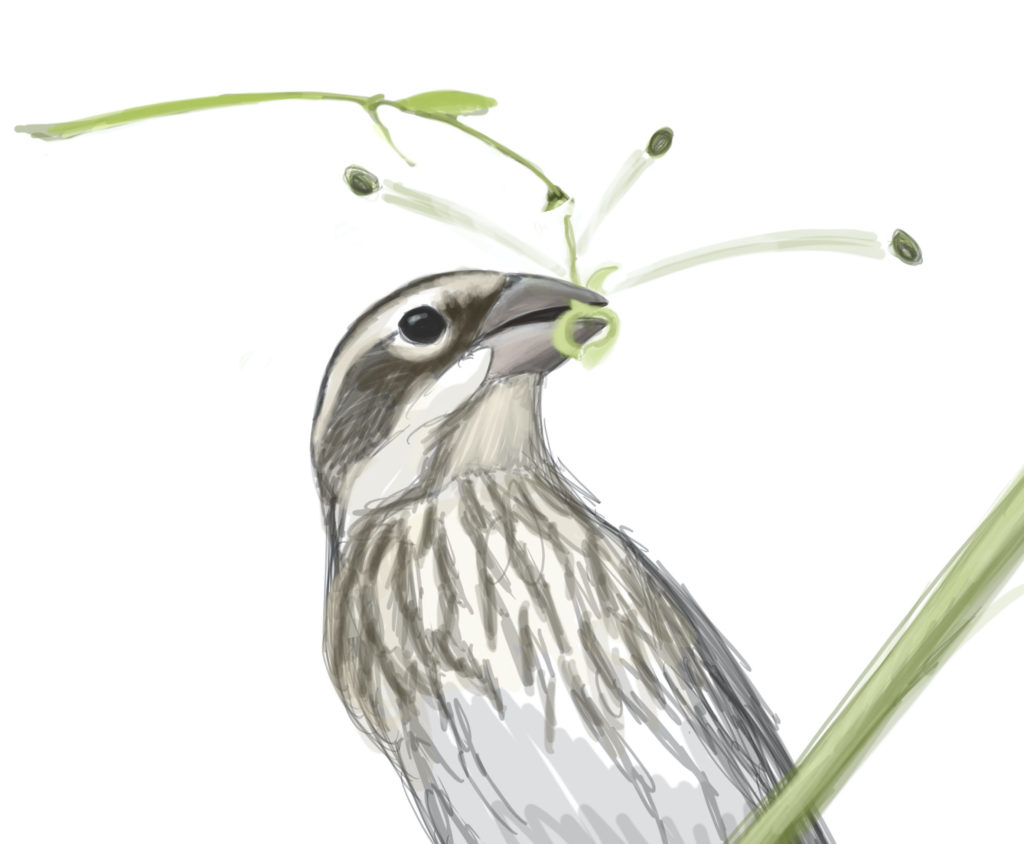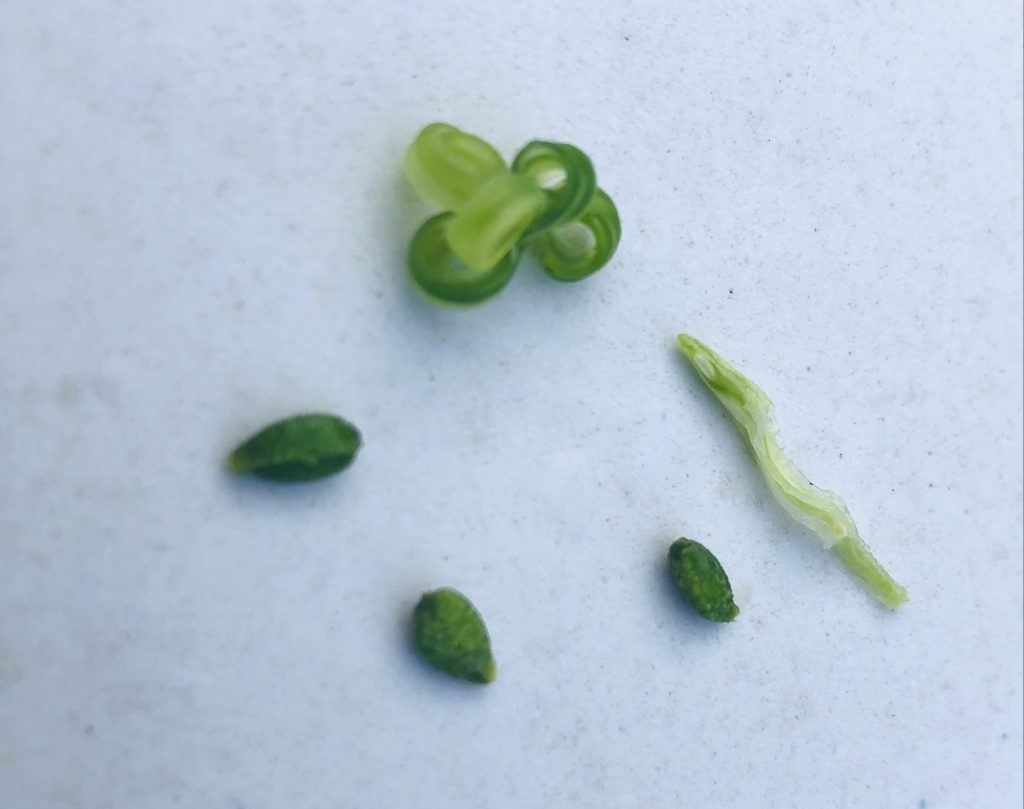Jewelweed (wikipedia link) is a common plant in the northeastern US, where its late summer flowers are very popular with bees and hummingbirds. Its most notable feature, however, is its seed pods. When the tiny pods are ripe the slightest touch causes them to snap open, flinging the seeds in all directions (scroll down to see a video). Hence, the alternate name: touch-me-not.


The common explanation for this explosive seed-flinging is that it is a way for the plant to disperse its seeds more widely. I’ve heard and repeated that many times myself, but it has always felt a little unsatisfactory. The seeds don’t go very far, and it seems like an overly simplistic explanation for a very complex adaptation.
This summer we have a large stand of jewelweed right outside our back door, and Rose-breasted Grosbeaks have been spending a lot of time in there. A few weeks ago I was able to watch a grosbeak as it foraged in the jewelweed, and I was a little surprised to see it feeding on the seed pods. Watching the grosbeak attempting to eat jewelweed seeds led to a Eureka! moment, an idea that immediately made sense and seemed obvious and logical…
Maybe jewelweed seed pods explode to prevent predators like grosbeaks from eating the seeds!
The grosbeak moved deliberately among the stems, looking for ripe seed pods. When it spotted one it leaned over and, with a quick lunge, took hold of the pod. Instantly the pod exploded, and if the grosbeak had been quick enough, and managed to get a good grip on the middle of the pod, it might still have a seed or two in its bill. Other times the pod exploded as soon as the grosbeak made contact, seeds flew, and the grosbeak was left with nothing.
I don’t know if this is a new idea. I couldn’t find any reference to it, and would be very interested to know if it has been proposed and studied before.



Your idea makes a lot of sense. There are lots of examples of plants adapting against predation from animals: thorns, sensitive mimosa plants, and how acacia trees get bitter when giraffes are eating them and even signal nearby trees to get bitter. Brilliant insight, Mr. Sibley. Consider publishing this as a note in a peer-reviewed field journal.
These exploding pods can sometimes hurt birds, I believe. I guess the grosbeak was just trying to look for food. When the pods explode, they scatter. Wildly. This post proved very useful to me and I hope to think about this plant and the bird when I go birdwatching next time.
I love the before and after drawings you made of the grosbeak! Almost looks like a scene from a cartoon with the jewelweed seeds getting away once again. Evolution can have an almost comical tone sometimes and trying to nourish up on seeds that explode away makes a lot of logical sense. Thanks for the great post!
This is a fascinating idea. Is it possible that this also/instead evolved as a seed dispersal mechanism, i.e. that the seeds stick to feathers (or fur) and are thereby carried further than explosive dehiscence alone achieves? No idea what’s known about their feather stickiness!
That seems right!
I really like your books and facts about birds. I’ve always had a special relationship with them and I want to be an ornithologist when I am older. But, I am only a ten year old. I also love plants and love reading about your thing on Jewelweed!
I purposely propagate SILVERWEED around the house for the hummers, clearwings and RBGOs. What the grosbeaks don’t nab off the bat they glean from the ground whether their doing or not.
Also, often times the last seen dates for RTHU and RBGO are birds foraging on Jewelweed.
I very much like this post as I am a big fan of jewelweed. If I am working in the field and accidentally touch poison ivy, using this plant to neutralize the oils has bought me time with getting to soap and water. But I am confused. I thought that birds planted seeds by eating them and then eliminating them? It sounds like you are proposing that jewelweed has evolved to avoid being eaten by birds? What am I missing? Many thanks.
Also, I think jewelweed does well to grow together and its spring-loaded dispersal system (so fun!) is ideal for creating the spacing this plant needs to increase its chances for successful pollination and reproduction.
Good question. There is a fundamental difference between fruit (like berries) and bare seeds as on the Jewelweed. Plants like blackberry, pokeberry, apple, etc have evolved to enclose the seeds inside a sweet and tempting fruit. Birds and other animals eat the fruit for the nutrients in the outer layers, and the seeds are regurgitated or excreted more or less intact. This helps to disperse the seeds as they are dropped some distance from their “parent”. When a grosbeak or other seed eater is going after Jewelweed or other bare seeds it wants to crack them open and eat them, which destroys the seed, so plants evolve ways to try to prevent that.